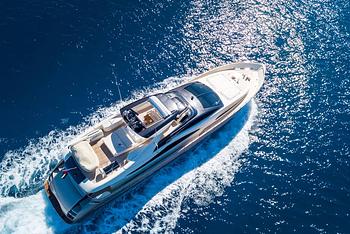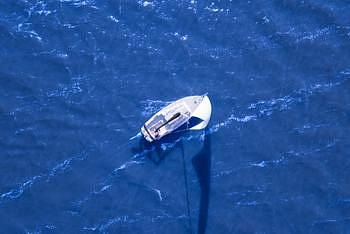Whenever hurricanes hit a coastline, soon after there’s a flood of hurricane-damaged boats on the used boat market. Many of these boats are declared a total loss by the insurance company and are sold at auction, as-is where-is, often at below bargain-basement prices. Some are bought back from the insurance company by the owners at its “salvage value.” In either case, these storm-damaged boats commonly go for a fraction of what they were worth prior to the weather event. If you’re willing to take the risk that goes along with buying a boat that’s suffered significant damage, you may be able to get one that was worth hundreds of thousands of dollars for tens of thousands, but the old saying “let the buyer beware” has never been more apt. If you're tempted to take on a damaged project boat even after reading this article, then before you take the plunge we recommend that you use a yacht broker or marine surveyor as a sounding board to explore potential issues and outcomes you might not have considered.

With a weather map like this, you know there will soon be storm-damaged boats on the market. Imagery by NOAA.
How to Figure Out What a Damaged Boat is Worth
The value of a storm-damaged boat can essentially be boiled down to the boat’s value on the used market in good shape versus the cost of repairs, with a caveat or two. If it’s a model that shows a book value of $100,000 and it requires $75,000 in repairs, its value will be in the neighborhood of $25,000.
Now for the first caveat: many people won’t be willing to buy a boat that once suffered significant damage, and the pool of potential buyers may be smaller than usual—even after the boat has been fully repaired. So, maybe its real-world value is closer to $20,000 and change. Another potential issue is the time it will take for repairs to be performed. Since you won’t be able to use the boat for a period of time, again, this means it’s worth less to many potential buyers. As is always the case when pricing a used boat, each individual boat will be worth a different amount to different people, and identifying what you can sell it for on the open market is always challenging.
Remember that when all those damaged boats go to auction, they’ve already been judged a complete loss by the insurance company. Insurance companies aren’t in the practice of giving away assets, so you can expect that they’ve already calculated how much it would cost to have a professional outfit fix up the boat and then sell it on the used boat market. And they’ve calculated that it isn’t worth the expense. However, a huge part of the cost they’ll be considering is labor. And this is where you may have an advantage. If you’re willing to do the work yourself and take labor costs out of the equation, it may be possible to fix the boat up and come out ahead.
Even if you’re a boat-fixing pro, there’s one more wild card to consider: auction prices. While boats often sell for much less at auction than they do on the open market, auction pricing is completely unpredictable. You may not have the time or ability to fully examine the boat and get a full grasp on just what repairs will be necessary. You could be bidding against a former owner who has a sentimental connection to the boat, a professional outfit that regularly buys, fixes, and resells storm-damaged boats, or someone who simply doesn’t realize just what a particular boat is really worth. Again, a huge dose of “buyer beware” is in order.
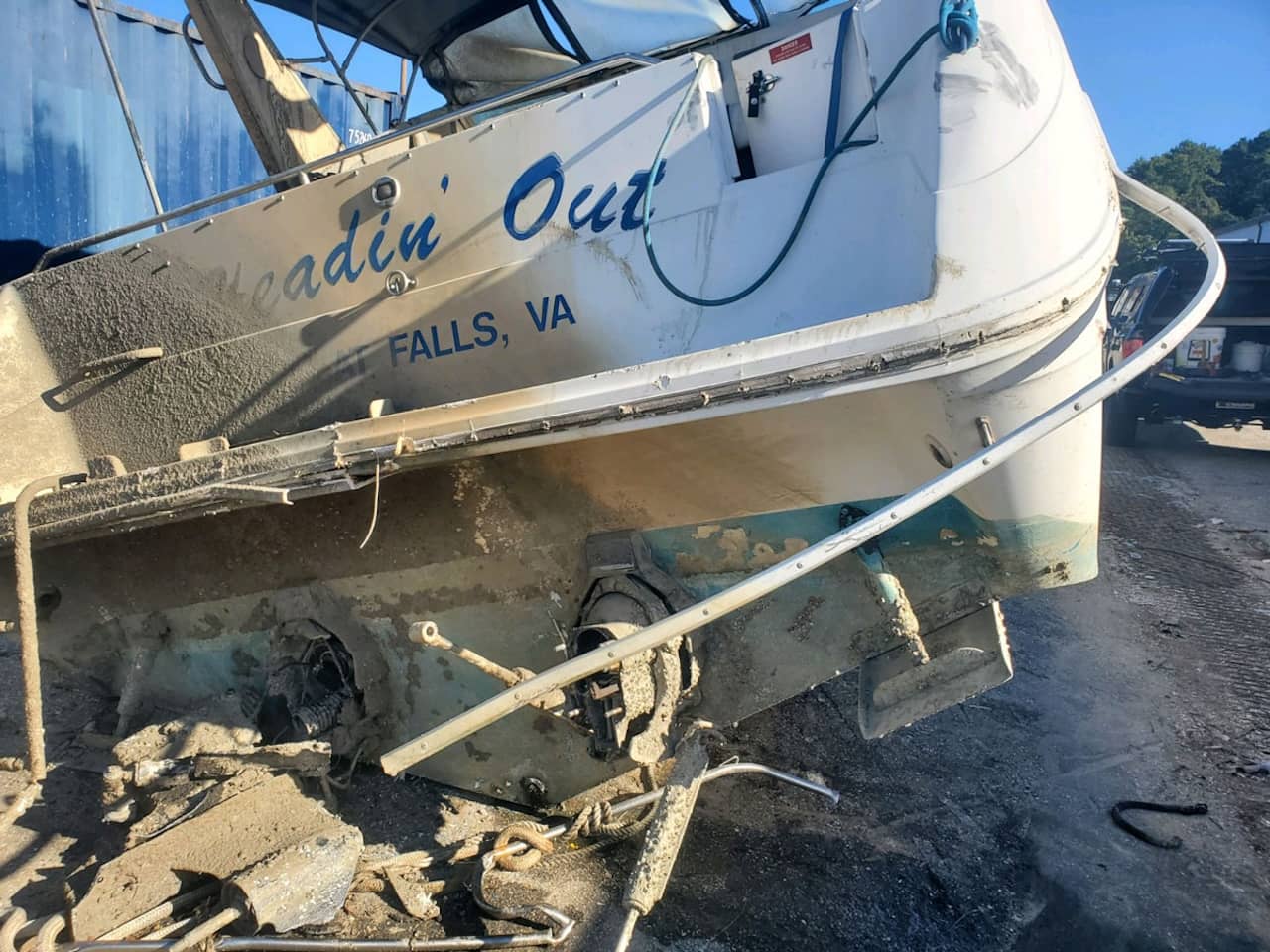
Storm-damaged boats can suffer from a range of ills, from submersion to impact damage. Hurricane-damaged boats often have both, and more.
Buying Boats That Have Sunk
Once a boat has been submerged. the damage will range from substantial to massive (an exception might be a simple sailboat without electronics.) Expect all soft goods and electronics to be destroyed, and power systems will at the very least require significant attention if not outright replacement. But there is a difference between boats that were submerged for a short duration of time versus days at a time. There’s also a difference between those submerged in freshwater versus those submerged in saltwater. Electrical systems, for example, may be salvageable if a boat briefly sank in freshwater. But extended submersion or saltwater exposure is usually the kiss of death for wires, connections, switches, and anything subject to corrosion damage. Everything from steering systems to gauges will likely need to be replaced. Even items that seem serviceable at first have a good chance of failing at some point down the road if they’re reused after a sinking.
There are also a number of items and systems hidden from the eye that are subject to immediate or future damage. Flotation foam may be saturated, which means it has to be scraped out and replaced. Aluminum fuel tanks probably look just fine, but a few months in the future could begin to suffer from corrosion. The list of potential problems you could be dealing with is virtually endless.
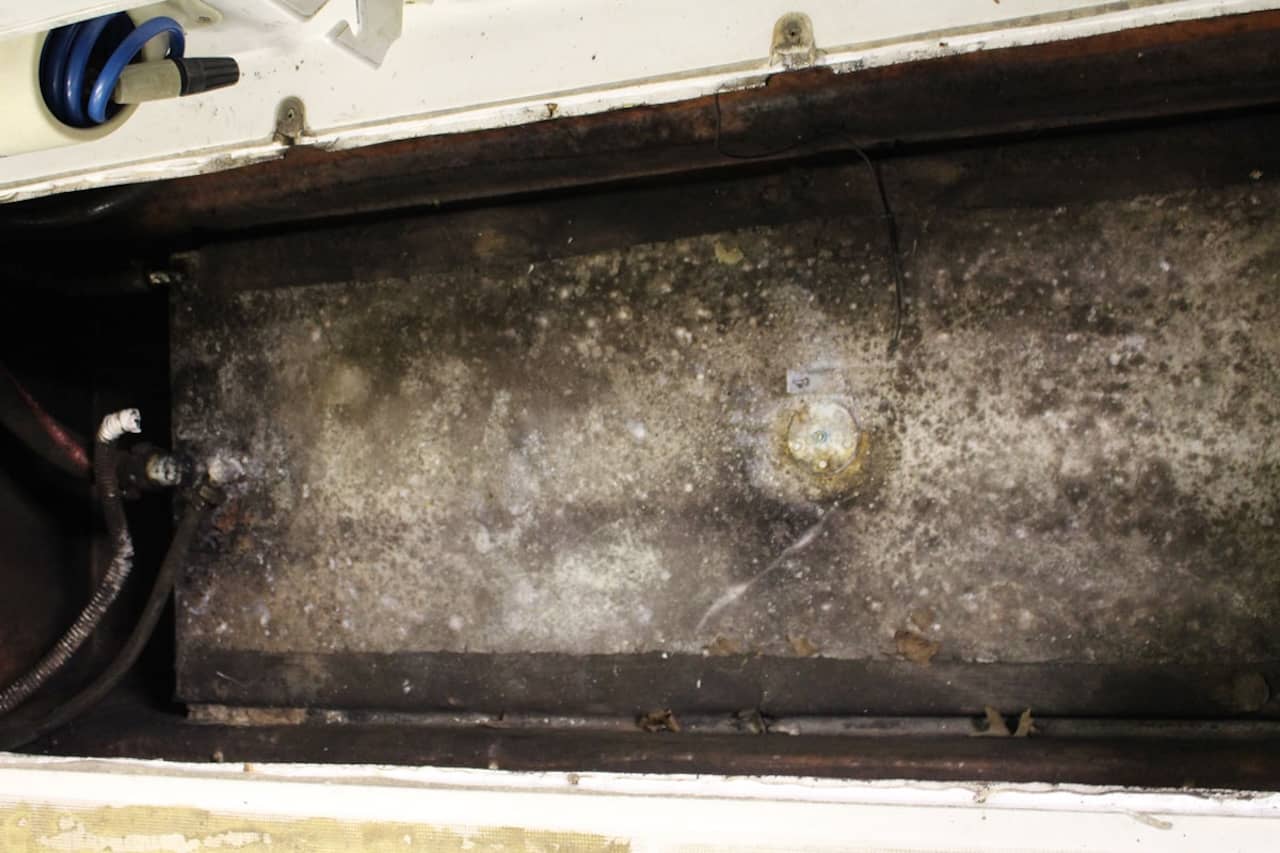
A few months post-submersion leads to all kind of interesting problems, like corroding fuel tanks, can rear their ugly heads.
Buying Boats with Significant Hull Damage
Hull damage is generally repairable; however, how the boat was originally built will have an impact on how difficult the repairs will be. Cored hulls can be very problematic, as the core has now been exposed to water and may be waterlogged; the core and laminate are likely separating in multiple areas; and large sections of the hull and core may have damage that isn’t visible to the naked eye. If there’s damage to major structural members like stringers, obviously, that will also require more significant repairs.
When all is said and done, there’s always one overriding factor to remember about boats with hull damage: that hull is what keeps the boat afloat, and your life depends upon it. Making DIY repairs to structurally damaged hulls is foolhardy at best, and this job requires the skills of a professional as a matter of safety.
Boats with Engine Damage
Engine damage can come in many forms after a hurricane or storm. Submersion, especially in saltwater, is often fatal (although as we mentioned earlier, how an engine was treated when the boat is removed from the water can have an impact). You may also come across engines that weren’t submerged but did ingest water, or engines that suffered impact damage.
Engines that have ingested water may be destroyed or may be salvageable, but each case will be different depending on how long water was present, whether it’s fresh or salt water, and how the engine was treated immediately following the event. It’s generally not quite as bad as an engine being fully submerged since the wires and accessories may not have been exposed to the water, but that said, it’s a huge risk to make any assumptions or guesses. When trying to ascertain the value of a salvaged boat with an engine that’s ingested water, it’s safest to plan on repowering.
Impact damage can run the gamut from catastrophic to negligible. All bets are off until and unless you can actually run the boat—not very likely for one that’s been written off by an insurance company—because there could be damage that isn’t visible to the eye. If a shaft got bent or an engine mount was knocked askew, for example, you probably won’t pick up on it just by looking.
Boats with Electrical Systems Damage
Most of the time an electrical system is damaged in a storm, water intrusion or submersion will the culprit. And most of the time, a complete overhaul will be in order. Corrosion at connections is virtually guaranteed, wires can wick water inside their shielding and go bad in unexpected places, and switches, fuses, and bus bars will almost certainly need replacement. Often when someone tries to salvage any portion of an electrical system that’s been submerged, especially in salt or brackish water, within a matter of months that portion of the system fails. As a rule of thumb planning for complete replacement is necessary.
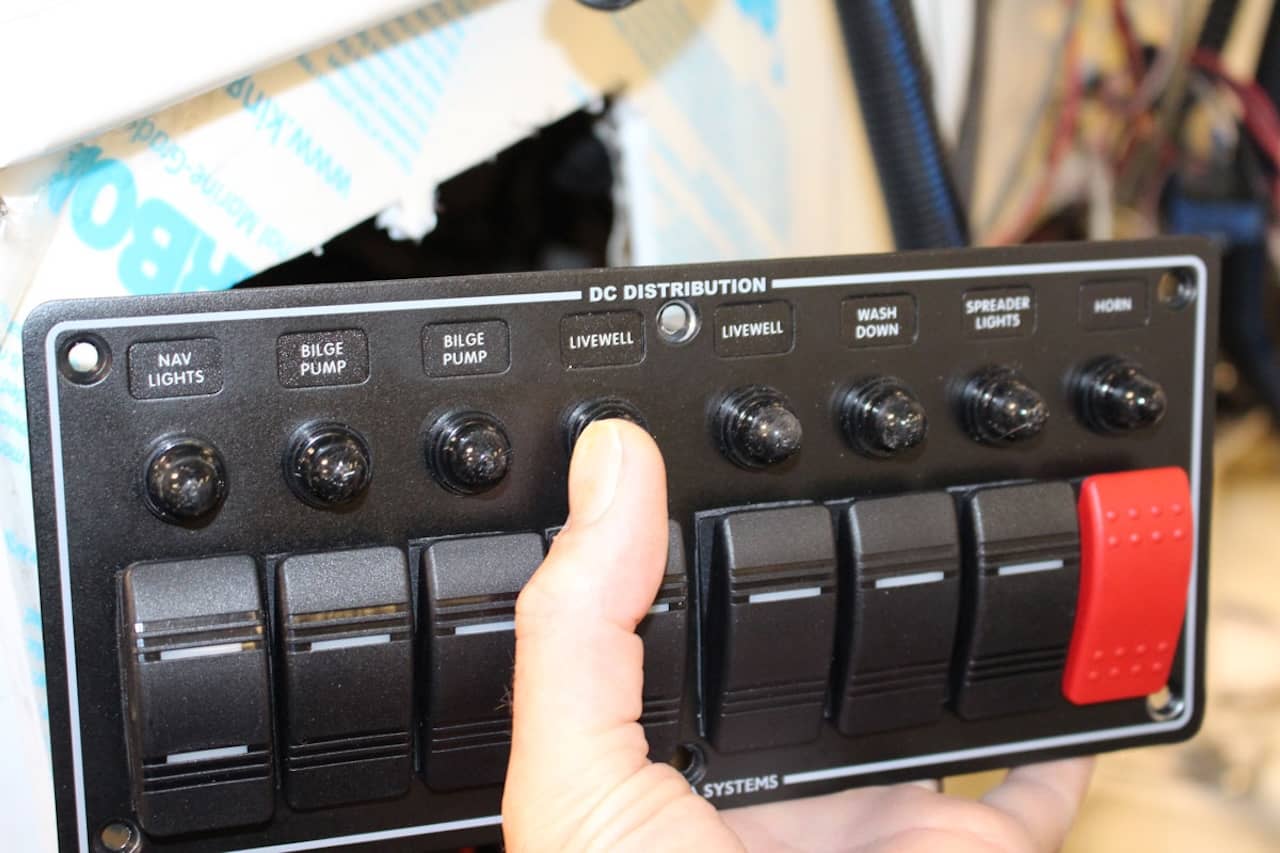
Water intrusion or submersion generally means replacing all of the electrical system from the wires to the switches.
Boats with Fire or Other Damage
Extensive fire damage can be the death knell of a boat. Fiberglass burns, and just about everything else aboard a boat either burns or melts. Of course, the extent of the damage can vary radically—you could be dealing with anything from some charred spots in the cockpit to the remnants of a raging inferno.
Repairing fire damage means cutting away anything that was exposed to open flames and completely replacing it. Even if the fire was limited to one area of a boat, there may be smoke damage throughout, so extensive cleaning and replacing soft good like cushions and carpets may be necessary as well.
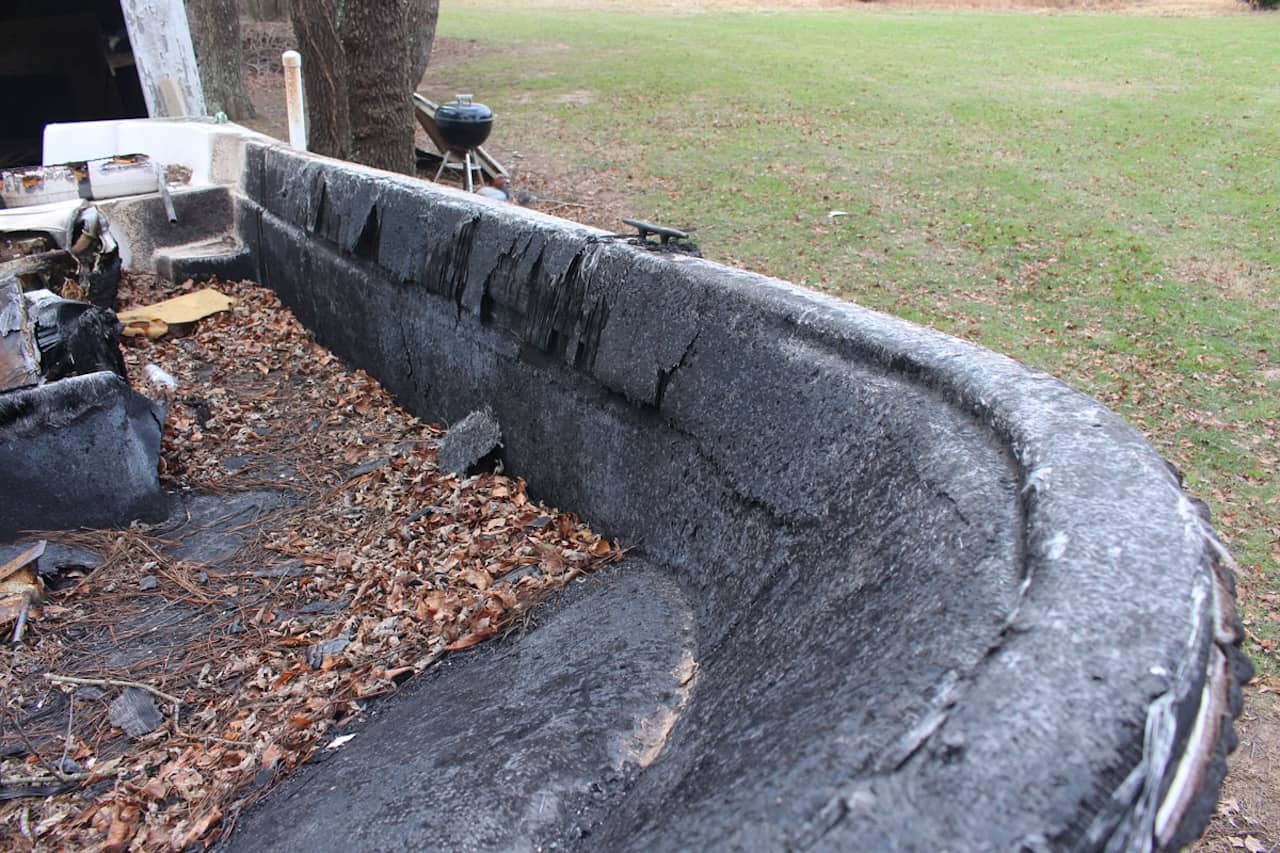
Fiberglass burns, and significant fire damage is often catastrophic for a boat.
Boats Declared a Total Loss
Remember that when a boat is declared a total loss, it doesn’t mean the boat can’t ever be fixed. It just means that the insurance company has determined that fixing it will cost them more than the boat is ultimately worth. And as we pointed out earlier a boat’s true value differs from one person to the next. If you’re willing to park that hurricane-damaged boat in your driveway and spend every weekend for the next year or two putting in all the labor that the insurance company didn’t want to pay for, you could eventually turn a “total loss” into a gleaming gem. Just expect that the process will take an extraordinary amount of time and effort on top of the material costs. And when it comes to buying a storm-damaged boat, always remember: buyer beware.
Check out or guide: Hurricane Preparation: Plan to Keep Your Boat Safe

